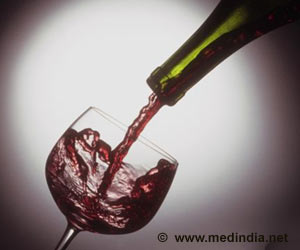In deepest Spain, in their fields of vines, the winemakers at the Jesus del Perdon cooperative smiled last August: the blend of rain and sun promised a bumper grape crop.

Spain overall produced 50 million hectolitres (6.7 billion bottles) of wine in 2013, a 41 percent surge from 2012, the Spanish agriculture ministry says.
The ministry's figure for Spanish production exceeds the estimates from the Italian and French wine industries for their own production -- 47 million and 42 million hectolitres respectively.
The definitive production figures from the International Organisation of Wine and Vine are published in May. But if confirmed, they would give Spain another industry to look to for exports to build a lasting recovery from the burst property bubble that has hobbled the economy since 2008.
Even Rafael del Rey, director of the Spanish Wine Market Observatory, admitted he found it "most surprising" that Spain leapt ahead to become the top wine producer in the world in 2013.
While weather helped -- last summer the country enjoyed the usual sunny weather plus enough rain to really water the vines -- the rise in Spanish production is also the result of a drive to increase productivity.
Advertisement
Twenty five years ago, Spanish vineyards had average yield of 17 hectolitres per hectare -- "very low", said Roca. But in recent years the yield has reached about 50 hectolitres per hectare.
Advertisement
"The vineyards' productivity has improved noticeably," del Rey said.
- A euro a bottle -
But one problem for winemakers is that Spanish drinkers, who generally prefer a cold beer on their sunny terraces, are not keeping pace with the surge.
"Apart from Norway, Spain is the country with the lowest wine consumption per capita in Europe," said Pau Roca, secretary general of the Spanish Wine Federation.
While just eight years ago, wine made in Spain was mostly drunk there, according to del Rey, now it is mostly exported.
"In the past two years, Spain has been exporting more than double the amount of wine it consumes," he said.
The experience of the Jesus del Perdon cooperative, nestled in the Castile-La Mancha region whose windmills and castles are the setting for Miguel de Cervantes's classic novel "Don Quixote", is typical.
The group of 682 producers in the central Spanish region exported just 20 percent of its output a decade ago. Now 86 percent goes abroad.
Exporting is not always an easy option for vineyards, however.
While Castile-La Mancha accounts for over half of the country's wine production, the region's producers must fight to distinguish themselves from better-known names in Spanish wine such as La Rioja and Cava.
"Unfortunately, wine from our region is still not sufficiently appreciated, especially in the foreign market," said the cooperative's viticulturist, Jorge Martinez.
And competition at the lower end of the market is fierce.
Spanish wine generally sells for half the price of French and the vintners of Castile-La Mancha have to keep their prices especially low.
Martinez said the range of 11 bottles the cooperative produces under its own brand sell for between one and six euros ($8.30) per bottle.
While growing output and need to export pose challenges for Spanish vineyards, it is an opportunity for the government which is counting on exports to drive economic recovery.
With the economy having contracted more than five percent since the property bubble burst in 2008, Spanish firms have been looking abroad for sales and the country's exports hit a record high last year.
The government expects the economy will grow by 1.0 percent this year, after having contracted in four out of the past five years.
Source-AFP










